The graph between the stopping potential (V0) and wave number (1/λ) is as shown in the figure.
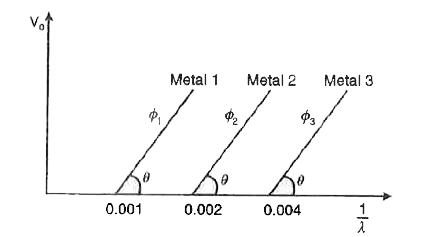
ϕ is the work function, then:Solution in Kannada
ϕ1:ϕ2:ϕ3=1:2:4
ϕ1:ϕ2:ϕ3=4:2:1
tanθ∝hC/e where θ is the slope
ultraviolet light can be used to eject photoelectron from metal 2 and metal 3 only
The correct Answer is:A, C
ϕ1:ϕ2:ϕ3=hcλ01:hcλo2:hcλo3
∴hcλ=ϕ+eVs
∴VS=hceλ−ϕc
∴ slope tanθ=hce
1λ01=0.001mm−1⇒λ01=1000Å
1λ02=0.002nm−1⇒λ02=5000Å
1λ03=0.004nm−1⇒λ03=2500Å
Here ultraviolet light can be used to eject photoelectrons from all 1,2 and 3 metals.
Topper's Solved these Questions
- ELECTRONS & PHOTONSBOOK - MODERN PUBLICATIONCHAPTER - ELECTRONS & PHOTONSEXERCISE - MULTIPLE CHOICE QUESTIONS (LEVEL-III)
9 Videos
- ELECTRONS & PHOTONSBOOK - MODERN PUBLICATIONCHAPTER - ELECTRONS & PHOTONSEXERCISE - RECENT COMPETITIVE QUESTIONS
20 Videos
- ELECTRONS & PHOTONSBOOK - MODERN PUBLICATIONCHAPTER - ELECTRONS & PHOTONSEXERCISE - RECENT COMPETITIVE QUESTIONS
20 Videos
- ELECTROMAGNETIC WAVESBOOK - MODERN PUBLICATIONCHAPTER - ELECTROMAGNETIC WAVESEXERCISE - RECENT COMPETITIVE QUESTIONS
4 Videos
- ELECTROSTATICSBOOK - MODERN PUBLICATIONCHAPTER - ELECTROSTATICSEXERCISE - RECENT COMPETITIVE QUESTIONS
39 Videos
Similar Questions
Energy required for the electron excitation in Li++ from the first to the third Bohr orbit is :
View SolutionAccording to Einstein's photoelectric equation the graph of K.E. of the photoelectron emitted from the metal versus the frequency of the incident radiation gives a straight line graph whose slope
View SolutionAccording to Einstein's photoelectric equation the graph of K.E. of the photoelectron emitted from the metal versus the frequency of the incident radiation gives a straight line graph whose slope
View SolutionThe speed of electromagnetic wave in vacuum depends upon the source of radiation
View SolutionTwo small spheres of masses M1andM2 are suspended by weightless insulating threads of lengths L1andL2 The spheres carry charges Q1andq2 respectively . The spheres are suspended such that they are in level with one another and the threads are inclined to the vertical at angles of θ1andθ2 as shown . Which one o fthe following conditions , if θ1=θ2 ?
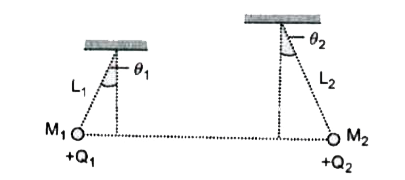
View SolutionGraph between stopping potential and frequency of photon is given in figure
_2019_CBT7_E01_021_Q01.png)
Find out work function of metal:
View SolutionThe graph between the stopping potential (V0)and(1λ) is shown in the figure ϕ1,ϕ2andϕ3 are work function , which of the following is //are correct
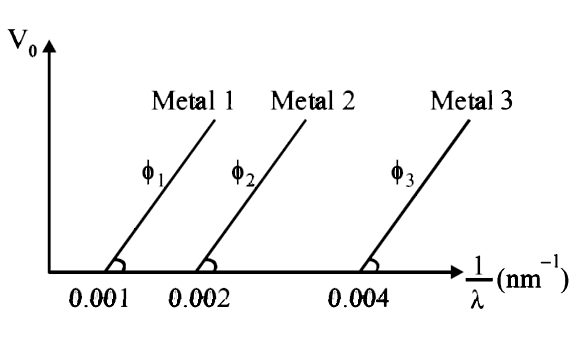
View SolutionThe stopping potential (V0)
View SolutionThe figure shows different graphs between stopping potential (V0) and frequency (v) for photosensitive surface of cesium , potassium , sodium and lithium. The plots are parallel. Correct ranking of the targets according to their work function greatest first will be

View SolutionThe graph between the stopping potential V_(0) and frequency v for two different metal plates P and Q are shown in the figure. Which of the metals has greater threshold wavelength and work function.
View SolutionIn an experiment on photoelectric effect, a student plots stopping potential V0 against reciprocal of the wavelength λ of the incident light for two different metals A and B. These are shown in the figure
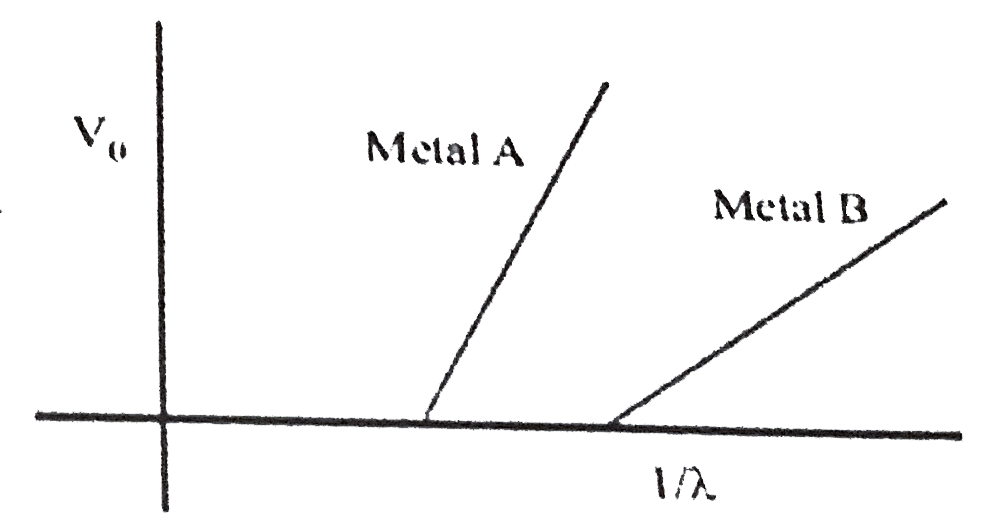
Looking at the graphs, you can most appropriately say that :
View SolutionThe stopping potential as a function of frequency of incident radiation is plotted for two different photoelectric surfaces A and B . The graphs as shown in figure shows that , the work function of A is
View SolutionFor a photocell, the work function is ϕ and the stopping potential is Vs . The wavelength of the incident radiation is
View SolutionIn an experiment of photoelectric effect the stopping potential was measured to be V1andV2 with incident light of wavelength λandλ2, respectively. The relation between V1andV2 is
View SolutionGraph between stopping potential and frequency of light as shown find the work function
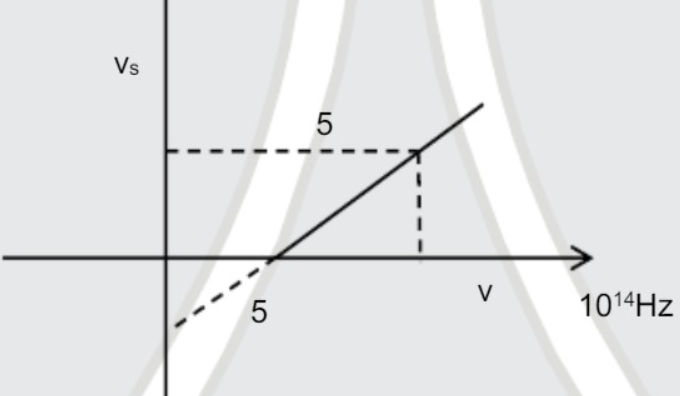
View Solution
